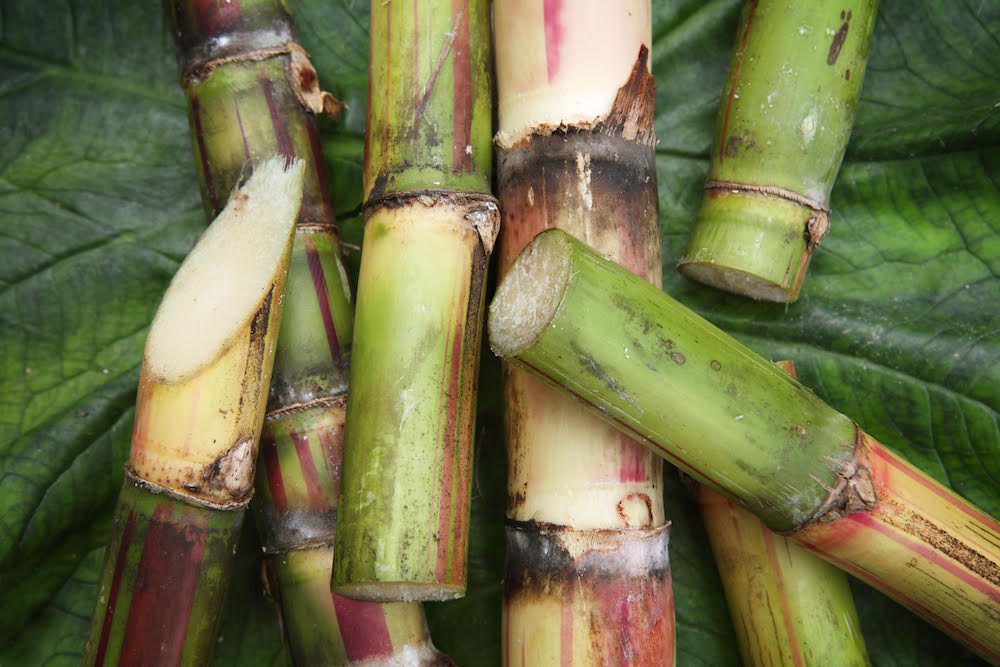Did you know that real sugar is one of the world’s oldest documented commodities? And at one point in time, it was so prized that people would actually lock it up in a sugar safe? The whole story begins with sugar cane, about 10,000 years ago.
Sugar cane is a tropical grass that grows 10–20 feet high. Unlike sugar beets, it’s perennial, meaning it doesn’t need to be replanted every year. When harvested, sugar cane is cut just above the root level so new sprouts will grow, ready to be harvested again in 10–12 months.
Where Does Sugar Cane Come From: Prehistory
While chewing sugar cane for its sweet taste was likely done in prehistory, the first indications of its domestication were around 8,000 BCE. Sugar cane spread from the Polynesian region across the world, becoming a truly global crop with strides in cultivation and processing along the way.
Sugar in its crystalized form also has a long history and was even found in medicinal records of both Roman and Greek civilizations. Typically, sugar was used to treat indigestion and stomach ailments, and was also used in wound healing.
Sugar Cane Goes Global
Sugar cane’s history throughout modern time follows global cultural and political shifts. By 640 CE China had developed sugar cane cultivation techniques using technology acquired from India.
Between 1096 – 1099, Crusaders returned to Europe from the Holy Land with prizes of sugar, which they called “sweet salt.” Around 1390, advanced sugar presses were developed, doubling the amount of juice that could be obtained from sugar cane.
Sugar was cultivated for large-scale refinement for the first time in Madeira between 1455 – 1480. By the end of this period, about 70 ships were involved in the Madeira sugar trade. Refining and distribution operations were based in Antwerp, Belgium.
Advances in the New World
Sugar cane was brought to the Americas in the 15th century, arriving first in Brazil by way of Portuguese traders. The first sugar cane planted in the New World was a gift from the governor of the Canary Islands to Christopher Columbus.
In 1813, inventor Edward Charles Howard developed a more fuel-efficient method of refining sugar, which boiled the cane juice in a closed kettle heated by steam and held under partial vacuum. Called “Howard’s vacuum pan,” it revolutionized the industry.
Modernization of sugar cane cultivation began when 16 whole-stalk harvesters were successfully used to harvest cane in Louisiana in 1938. Labor shortages caused by World War II led to the need for increased mechanization and by 1946 the number of whole-stalk machines operating in Louisiana jumped to 422, harvesting 63% of the state’s crop.
Sugar cane is now grown in 80 countries and today three U.S. states grow sugar cane: Florida, Louisiana and Texas. Raw sugar is refined in California, Florida, Louisiana, Georgia, Maryland, Michigan and New York.




Get Social with #MoreToSugar